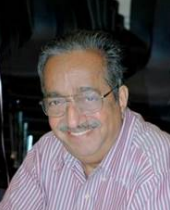Lokadharma Seminar Introduces Integrated Dharma Education Curriculum
New Research in Sanskrit Explores the Beauty and Uniqueness of the Language
FOR IMMEDIATE RELEASE
January 11th, 2013, (Houston, TX) – Bedrock of Dharma traditions is adhyatmic (spiritual) pursuit by individuals, and in households. Dr. Bala Aiyer, a medical professional and a Dharma teacher, and co-founder of the Lokadharma program, stated in his opening remarks in a seminal presentation at a Dharma education seminar held here. Elaborating further, he added that due to distractions of modern life, individual pursuit of adhyatmic practices suffer. Many observe rituals and celebrate festivals without knowing their adhyatmic purpose and connectivity to the larger Dharma cultural context. Without this background knowledge, over time, individuals drop practices at home, resulting in an irreparable loss of Dharma traditions. The Lokadharma education and training program is designed, specifically for parents with young children, to educate and spread Dharma awareness, in addition to providing necessary training on how to pursue the rituals and celebrate festivals in households. The program is also a useful resource for those in American mainstream who want to partake the pursuit of adhyatma (Dharmic spirituality) without the baggage of “organized” religion. The Dharma Education curriculum under Lokadharma is the only program of its kind that includes exposition and training in both aastika and naastika darsanas and practices. Further, it is one of the kinds that is not tied to a single guru or personality, and is not organized as a western-style single-guru single-deity congregational sampradaya. Cornerstone of Lokadharma program is integrated Dharma education and training that sees Artha, Kama and Moksha as a Dharma continuum, and validates both aastika and naastika darsanas as ways to pursue adhyatma.
Cleaning Temples Coupled with Pujas
Dr. Aiyer’s presentation on the concept of Lokadharma elaborated on the uniqueness of the program which includes an exposition of naastika darsanas in Dharma traditions, such as Bauddha, Jaina and Lokayata, in addition to aastika darsanas viz. Sankhya, Yoga, Nyaya, Vaisheshika, Purva Mimansa and Vedanta. Further, the concept of Lokadharma fills a long-standing gap between artha/kama and pursuits of moksha within the ambit of Dharma, resulting in the current disconnect between “this world” and “other world” pursuits among the Dharma practitioners. This disconnect yields the image of being escapist, which was never the intent of Dharma traditions in classical India. As a step into an integrated view of Dharma traditions, Dr. Aiyer informed the seminar participants, about the Temple cleaning program currently undertaken by Lokadharma program participants in India. He said that most temples in India are seen as unclean and unkempt. Therefore, the Lokadharma program participants have taken up the task of temple cleaning in parallel with doing regular pujas at temples.
The “Dharma Roots” Program For Overseas Practitioners
Dr. Aiyer also introduced the “Roots” program which intends to connect overseas Dharma practitioners to villages in India, wherein one or more families in the US can adopt their ancestral village in India for socio-economic development and cultural empowerment. The program consists of sponsoring a purohit-cum-temple care taker who would also double as a Dharma teacher in the village. The Dharma teacher would keep up the village temple on behalf of the sponsoring family and conduct free of cost Dharma classes and instruction gurukula style for village children. The teacher will also provide basic literacy and help with regular education. At present the Dharma Roots program is available in the state of Tamil Nadu, but can be easily extended to other parts of India.
New Research in Sanskrit Explores the Beauty and Uniqueness of the Language
The seminar was also addressed by, Dr. Narayan Joshi, a distinguished scholar of Vedas and Sanskrit. Dr. Joshi presented his new research on Sanskrit showing that Sanskrit was integral part of the ancient Indian culture and Vedic traditions. Sanskrit occupies the same exalted position in modern day Dharma practice. Some scholars treat Sanskrit as old language of only historical importance. On this background Dr. Joshi brought into focus the ancient doctrines of Shotavaada versus Varna vaada. Using his modern scientific knowledge of sound waves he has illuminated the hidden perspective of Sanskrit shabdas based on the Varnavaada (phonemic symbolism). This symbolism is not random but based on the solid foundation of physical properties of the articulated sounds produced by human vocal tract. This internal beauty of Sanskrit brings pure joy and admiration for this living language, Dr. Joshi concluded. Thus, in Dharma practice of any kind, Sanskrit plays an important and a unique role, and cannot be replaced by any other language.
Presentation on Makar Sankranti
The seminar was concluded by a crisp presentation on Makar Sankranti by Sri Chenniyangiri Kuzhanthaiswami, a young Dharma practitioner. His presentation detailed the background and significance of Makar Sankranti to Dharma practice, along with elaborate ways to observe the same at home.
Lokadharma program in the U.S. is offered through Loka Dharma Seva Foundation of America, which is a tax-exempt faith-based integrated community development organization. The “faith” refers to the adhyatmic process which includes both aastika and naastika practices.
Further Information
Loka Dharma Seva Foundation of America Inc.
info@ldsfa.org








